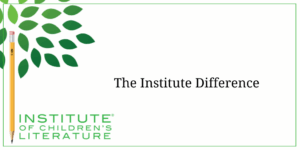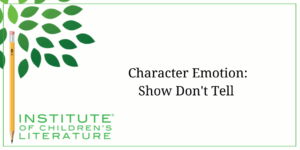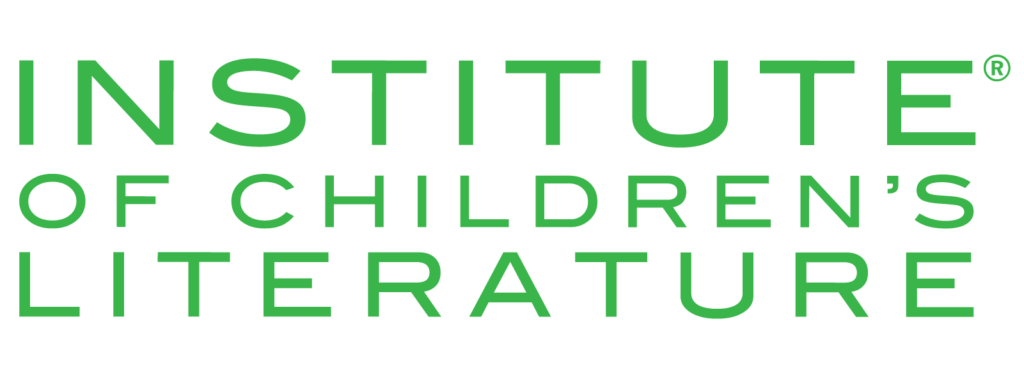
- Date: March 13, 2025
- Author: Jan Fields
- Category: Writing for Children Blog
- Tags: Children's Writing, female characters, Women
We teach our students how to write and get published!
View our Course Catalog >
Writing Female Characters
In my previous essay, I talked about the Dick and Jane readers when I was a child and the rather stereotypical character presentations. Mom tended to wear an apron as if she were in the middle of cooking, unless she was in a smart outfit for shopping and outings. Dad usually wore a suit and was often just coming home from work. And Dick talked about the superiority of boys over girls. These books were part of what shaped children in the sixties when I was reading them. I didn't find myself in between the covers of such books with their tidy, quiet, agreeable female children. But even during my childhood, I found female characters who didn't conform to stereotypes and would not be repressed, period. One of my favorites from my childhood was Pippi Longstocking, a character created by Swedish author Astrid Lindgren. Pippi was physically strong and stubbornly independent. She had so many adventures. I adored her.
Pippi wasn't the only character who refused to conform to expected behaviors. Alice, from Alice in Wonderland, may have been drawn in a dress, tights and dainty shoes, but she was far from weak. She faced the wild creatures and landscapes of wonderland with courage, not timidity, and a willingness to stand up to bullying. The characters I related to were often in trouble for their stubborn refusal to conform. They helped convince me to be myself, even if that wasn't a popular choice with the adults around me. 
Strong Female Characters
Over the years, female characters have become more and more insistent on being multi-faceted and instigators of adventure. Female characters are often described as “strong.” Certainly, Pippi was strong, both physically and in terms of bold personality, but so is Olivia by Ian Falconer when she boldly makes her own way (even if it wears her mom out a bit) and Princess Magnolia by Shannon and Dean Hale (drawn with style by LeUyen Phan) when she proves she can be both the dainty princess who handles tea parties with perfect manners and the fierce princess defeating monsters. But strong characters don't have to be quite so over the top.
An example of a strong, quiet female character is Poppy, in Kengo Kurimoto's picture book Wildful. Poppy's dog leads her into a wild place she never expected. Poppy doesn't have the “larger than life” personality of Olivia or Princess Magnolia, but she feels things deeply and is willing to face scary things for the sake of those she loves. “Strong” doesn't have to mean outrageous or unrealistic. More times than not, it points to a character who is true to herself and willing to do what it takes to overcome story problems.
Female Characters as Leaders
Not every strong female character needs to be a natural leader. A good character is complex, and sometimes that complexity includes being a great supporter, a true friend, or even someone who is more comfortable working quietly in the background. But the introduction of books with strong female leaders is a way to encourage readers to see leadership in themselves and not listen to voices that may be telling them they are too loud or too bossy, when they are displaying characteristics of a natural leader. And sometimes a book may have a character who needs to step into a leadership role because of her special knowledge or skills, even when she is not comfortable with the idea. Strong female characters are often pushed out of their comfort zone in the stories where they dwell, what makes them strong is the way they rise to the task before them.
Clever and Curious
 When I was a kid, it was generally believed that girls were bad at math and science, but boys were great at those. Girls were good at quiet things like reading and home economics. This created a problem for me as I adored science and reading but was rubbish at arithmetic and home economics.
When I was a kid, it was generally believed that girls were bad at math and science, but boys were great at those. Girls were good at quiet things like reading and home economics. This created a problem for me as I adored science and reading but was rubbish at arithmetic and home economics.
Was I boldly breaking the stereotypes or falling right into them? It didn't really matter. I was just me, a complex kid with strengths and weaknesses.
That's true of female characters in books today. Your character may be brilliant at computation or terrible at it. She may be a great athlete or prone to falling over her own feet. Mostly what she will be is complex. She will be living in a period of self-discovery where she learns what she is made of.
Still, given that, most strong female characters are curious. It is probably one of the most common traits of main characters in children's books, but especially so in female characters. They may not be at the top of the class in school, but they'll be clever (even if they haven't realized it yet). And nearly always, they will think outside the box. They will see what someone else might not. They will bring strengths into the situation that give them a unique insight. And that will help them overcome whatever story obstacles you have planned for them. They will have other traits too, but curious and clever will probably be in the mix.
Positive about Negatives
Most characters in good children's books have characteristics that are both a hinderance and a help. An impulsive child might get herself into trouble due to her impulsivity, but she'll also be the first to jump at the right answer when it comes up. A stubborn child may drive adults up the wall, but she'll also refuse to give up as the odds stack up against her. Partly this kind of character shows readers that they can accept who they are right now and look for ways to make use of traits other people scold them for. It helps readers see themselves as more capable, and more valuable than they may have thought.
So strong female characters don't mean perfect female characters. They will have missteps, and they definitely won't be everyone's cup of tea, but they will be people who come to appreciate themselves, both the parts of themselves that receive praise and the parts they trip over most of the time. And they will use their whole self to overcome the story problem.
Self-Aware, Eventually Anyway
One thing about strong female characters is that they are often introspective. They think about things. Now, they might not be people who want to talk about relationships. They may not be people who want to talk about emotions. But they will be people who think about what is going on around them and within them. And often the things they tell themselves aren't important will be part of thoughts that pop up over and over until they deal with them. A robust inner life is becoming more and more a part of all the characters in children's books, but it has always tended to be part of female characters. 
Shy Away From Stereotypes
Finally, it's important to think about the female characters who pop in the story but aren't your main character. Your story should not be populated by stereotypes. Dick and Jane's mother who was rarely seen without her apron is an artifact of a different time. That doesn't mean your story mom might not love to cook. Maybe she does. But it should not be all she is. If you have a character who is only going to pop in briefly and not get deep story development, you'll always be better off if that person isn't a stereotype.
For one, your publisher may ask you to change the person. Publishers prefer as few stereotypical characters as possible in stories. So moms won't live in the kitchen, dads won't hide behind the newspaper (and not just because almost no one gets actual newspapers anymore), older characters won't be stationary and grouchy. If you can only show one facet of a character because they are just passing through, choose a facet that doesn't match the stereotype.
This is true also for kid characters and stereotypes. Your strong female character shouldn't be surrounded by one-note characters who match old-school stereotypes. She shouldn't be the only girl who is good at science, or the only girl who speaks up for herself, or the only girl who plays sports. Not every girl has to be all things, but the more you shy away from old-fashioned stereotypes, the more your story will feel fresh and engaging for today's reader.
Related Articles for Creating Characters
With over 100 books in publication, Jan Fields writes both chapter books for children and mystery novels for adults. She’s also known for a variety of experiences teaching writing, from one session SCBWI events to lengthier Highlights Foundation workshops to these blog posts for the Institute of Children’s Literature. As a former ICL instructor, Jan enjoys equipping writers for success in whatever way she can.




